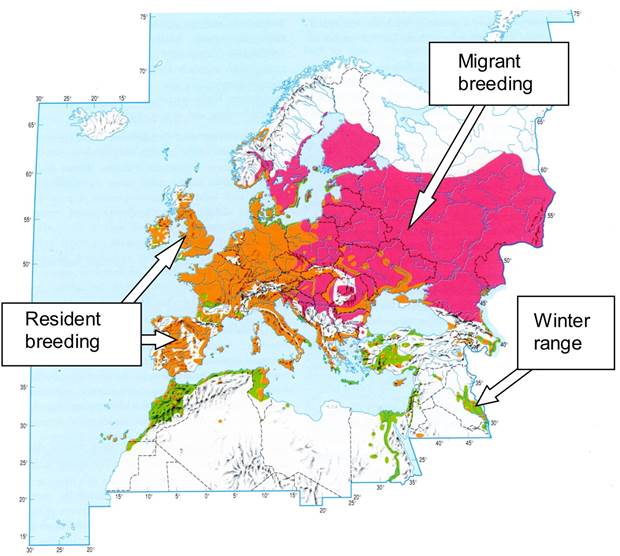Some years ago the environment dept wanted a coot photo and I searched the local wet spots for a full day before finding one at Nerang Pool, perhaps the only
one in Canberra. HANZAB says ‘Dispersive. No apparent large-scale seasonal pattern of movement’. On the other hand the below is the Coot distribution given in
Birds of the Western Palearctic. The pattern is similar for the Moorhen, Water Rail etc The HANZAB map could be annotated similarly with ‘Dispersive Range’ substituted for ‘Winter Range’. We are now in a dispersive period.

From: Philip Veerman [
Sent: Monday, 3 October 2016 11:10 AM
To:
Subject: RE: [canberrabirds] Missing coots
There was a TV doco about the ethnic group who I think call themselves the swamp Arabs who have a culture in which many species of water birds are of great importance.
As I recall, the only birds that they eat in great quantities are Coots (almost the same as ours) and only when they arrive in vast numbers from far away, following suitable wet conditions....... So that is a long history of exploiting coots for their ability
to travel great distances.
From: Mark Clayton
Sent: Monday, 3 October, 2016 8:29 AM
To: 'B&RGraham';
Subject: RE: [canberrabirds] Missing coots
When I did the first of the monthly counts looking for Latham’s Snipe on the two ponds at McKellar I commented on the lack of Eurasian Coots at both sites.
This had not changed when I did the second count in September. Almost certainly the birds have moved into the flooded parts of the country to take advantage of the conditions there. Like many species of wetland birds they appear to know when flooding has taken
place and know that conditions will be good for quite some time. When things dry out they will return to their local haunts.
Most people assume that coots are not great fliers. This is not so. Back in the early 1970’s when I first started at CSIRO Wildlife, my boss, the late Dr Wayne
Braithwaite, was trapping Pacific Black Ducks and Grey Teal at Lake George for his PhD studies and I was the “bunny” going in to the traps to remove birds. Along with these species we also trapped lot of other species, including Eurasian Coots, that we banded.
We were very surprised when we started to get recoveries from Tasmania within 10 days. I don’t know why the birds moved to Tasmania or what the conditions were like and at the time neither Wayne or I checked the Tasmanian situation out.
Mark
From: B&RGraham
Sent: Sunday, 2 October 2016 8:11 PM
To:
Subject: [canberrabirds] Missing coots
In my walk round Yerrabi Pond this morning there were no Eurasian Coots of grebes. There was only a pair of Pacific Black Ducks in the duck family. The coots usually number
between 600 and 800. It is odd to see Yerrabi almost empty of waterbirds. Black Swans were breeding ,Dusky Moorhens and Australian Swamphens were still present.The Eurasian Coots never breed there although breeding has been recorded in smaller suburban ponds.

